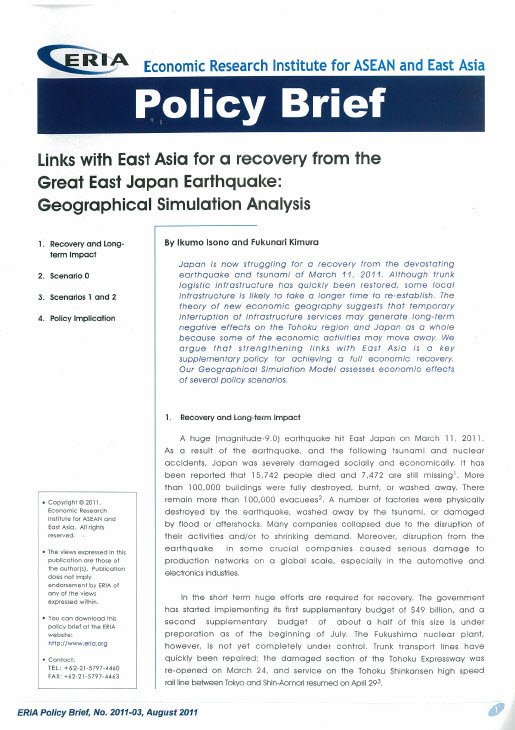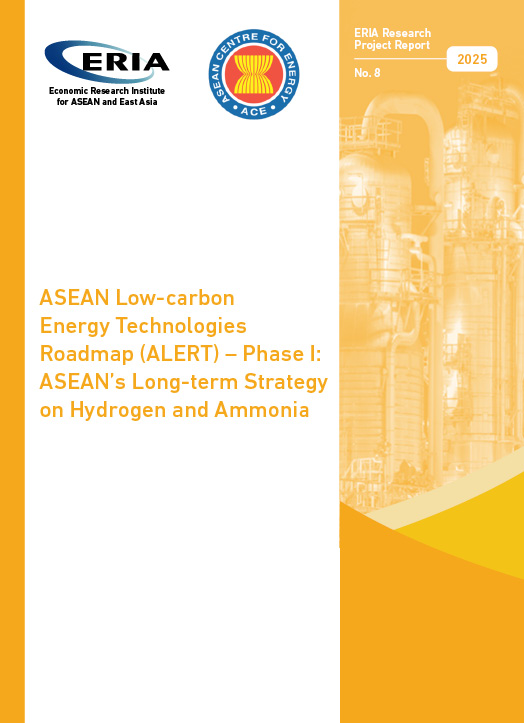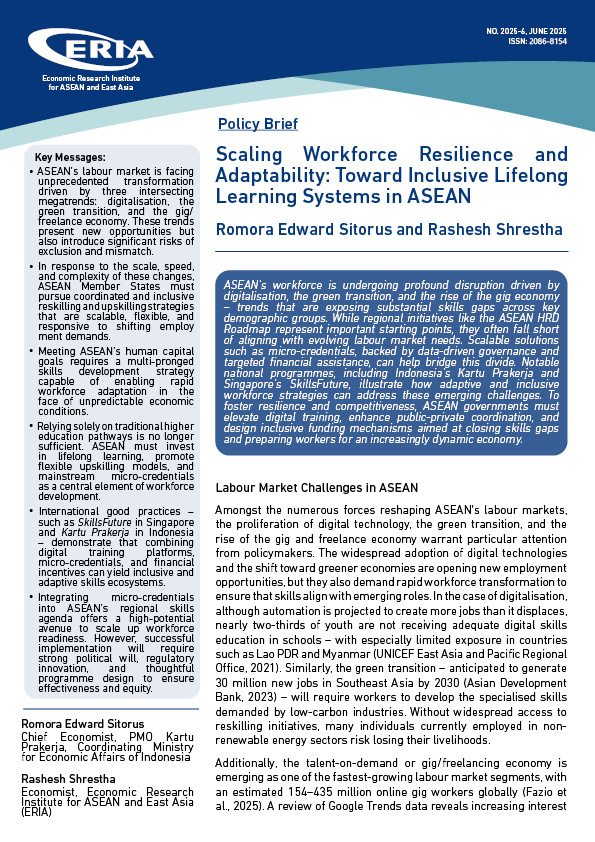Links with East Asia for a recovery from the Great East Japan Earthquake: Geographical Simulation Analysis

Date:
1 August 2011Category:
Disasters, Social Protection, Innovation and Technology, Infrastructure, Regulation and GovernanceType:
Policy BriefsTags:
Print Article:
Abstract
Japan is now struggling for a recovery from the devastating earthquake and tsunami of March 11, 2011. Although trunk logistic infrastructure has quickly been restored, some local infrastructure is likely to take a longer time to re-establish. The theory of new economic geography suggests that temporary interruption of infrastructure services may generate long-term negative effects on the Tohoku region and Japan as a whole because some of the economic activities may move away. We argue that strengthening links with East Asia is a key supplementary policy for achieving a full economic recovery. Our Geographical Simulation Model assesses economic effects of several policy scenarios.




